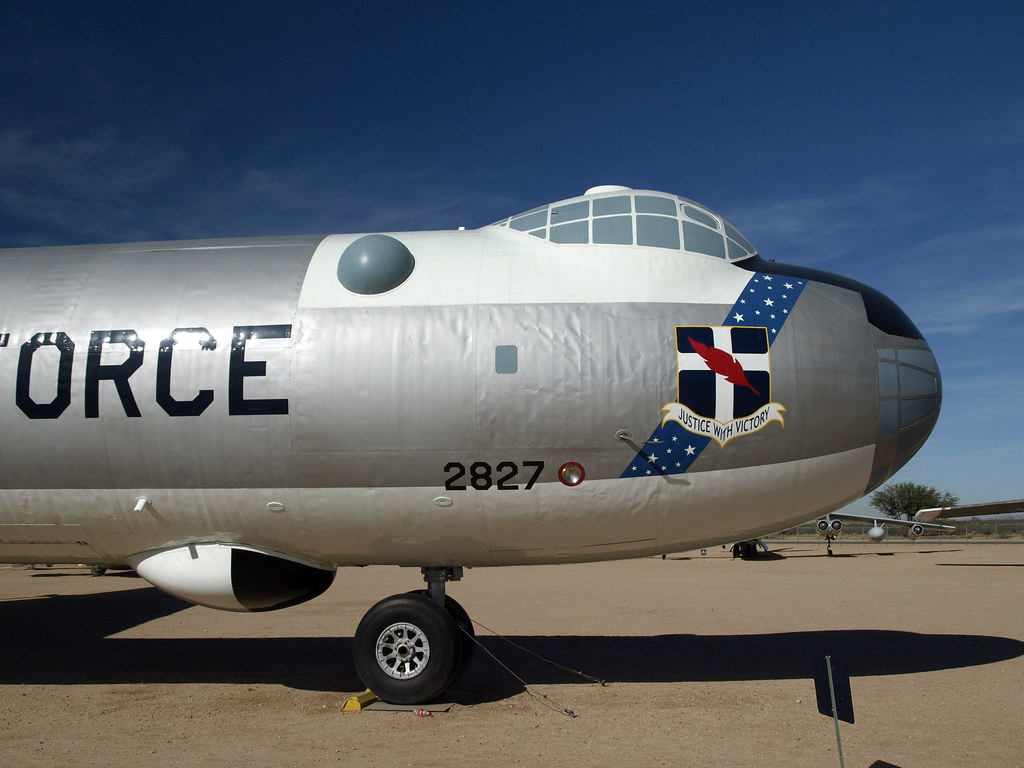The Convair B-36 "Peacemaker" is a strategic bomber built by Convair and operated by the United States Air Force (USAF) from 1949 to 1959. The B-36 is the largest mass-produced piston-engined aircraft ever built. It had the longest wingspan of any combat aircraft ever built, at 230 ft (70.1 m). The B-36 was the first bomber capable of delivering any of the nuclear weapons in the U.S. arsenal from inside its four bomb bays without aircraft modifications. With a range of 10,000 mi (16,000 km) and a maximum payload of 87,200 lb (39,600 kg), the B-36 was capable of intercontinental flight without refueling.
Entering service in 1948, the B-36 was the primary nuclear weapons delivery vehicle of Strategic Air Command (SAC) until it was replaced by the jet-powered Boeing B-52 Stratofortress beginning in 1955. All but five aircraft were scrapped.
The B-36 took shape as an aircraft of immense proportions. It was two-thirds longer than the previous "superbomber", the B-29. The wingspan and tail height of the B-36 exceeded those of the 1960s Soviet Union's Antonov An-22 Antheus military transport, the largest ever propeller-driven aircraft put into production. Only with the advent of the Boeing 747 and the Lockheed C-5 Galaxy, both designed two decades later, did American aircraft capable of lifting a heavier payload become commonplace.
The wings of the B-36 were large even when compared with present-day aircraft, exceeding, for example, those of the C-5 Galaxy, and enabled the B-36 to carry enough fuel to fly the intended long missions without refueling. The maximum thickness of the wing, measured perpendicular to the chord, was 7.5 feet (2.3 m), containing a crawlspace that allowed access to the engines. The wing area permitted cruising altitudes well above the operating ceiling of any 1940s-era operational piston and jet-turbine fighters.
In 1954, the turrets and other nonessential equipment were removed (not entirely unlike the earlier Silverplate program for the atomic bomb-carrying "specialist" B-29s) that resulted in a "featherweight" configuration believed to have resulted in a top speed of 423 miles per hour (681 km/h), and cruise at 50,000 feet (15,000 m) and dash at over 55,000 feet (17,000 m), perhaps even higher. More details

